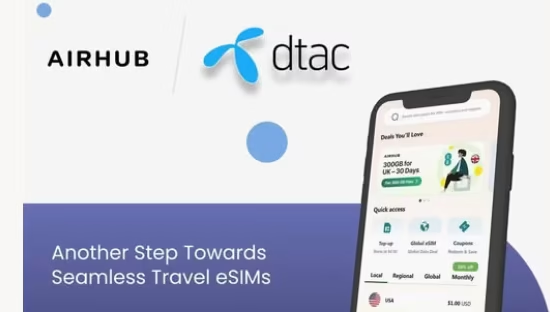
Blockchain in Gaming Market Set to Explode by 2032
The gaming industry is no stranger to disruption, but few technological shifts have sparked as much excitement—and investment—as the rise of blockchain in gaming. What was once a niche experiment in crypto-based collectibles has evolved into a multi-billion-dollar sector reshaping how games are built, played, and monetized. From enabling true ownership of in-game assets through NFTs to introducing play-to-earn models that blur the line between entertainment and income, blockchain technology is fundamentally changing the rules of the game. blockchain gaming mar
ket
Now, a new market report from Allied Market Research has put the scale of this transformation into sharp perspective. Valued at just USD 4.9 billion in 2022, the global blockchain gaming market is projected to soar to an eye-watering USD 818.5 billion by 2032, registering a blistering 66.5% compound annual growth rate over the next decade. This growth is not being driven by hype alone—it’s fueled by tangible advancements in decentralized game development, the mainstreaming of digital asset ownership, and the rapid adoption of blockchain-friendly mobile platforms.
The implications are enormous. For players, it means more control, transparency, and potentially even income streams from the time they invest in virtual worlds. For developers and investors, it represents one of the most explosive market opportunities in the tech sector. And for the broader gaming ecosystem, it signals the dawn of an era where innovation will be measured not just in graphics or gameplay mechanics, but in how games connect to digital economies on a global scale.
Key Growth Drivers
The report identifies several potent drivers fueling this explosive expansion:
- Surging interest in blockchain gaming among both developers and players, driven by innovative mechanics like play-to-earn.
- Rising demand for decentralized games and digital assets grants users genuine ownership and control over in-game purchases.
- Technological advancements in smartphones, enabling seamless mobile blockchain experiences
These will be balanced by critical challenges, such as:
- A shortage of technical expertise and resources, necessary for implementing complex blockchain systems.
- Regulatory uncertainty, which could hinder adoption and development in certain regions
Real-World Examples
The explosive growth of blockchain in gaming is not just a projection—it’s already being demonstrated by high-profile titles that have captured global attention. Axie Infinity, for instance, popularized the play-to-earn concept, allowing players to earn cryptocurrency by breeding, battling, and trading digital creatures. Gods Unchained introduced competitive trading card gameplay where cards are minted as NFTs, giving players verifiable ownership and the ability to trade outside the game’s ecosystem. Meanwhile, Illuvium is building an expansive open-world RPG with AAA-quality graphics, blending exploration, combat, and NFT asset collection. These games show how blockchain is not just a back-end technology but a core feature shaping gameplay, community interaction, and economic engagement.
Monetization & Revenue Models
Blockchain technology is redefining how games generate revenue and share value with players. Play-to-earn models reward users for their time and achievements, turning gameplay into an income source. NFT marketplaces enable the buying, selling, and trading of in-game items, skins, and characters with real-world value—often across different platforms. Additionally, staking mechanisms allow players to lock tokens in exchange for governance rights, yield rewards, or exclusive in-game perks. This decentralization of value creation and distribution is fostering an entirely new relationship between developers and players, where the gaming experience doubles as an investment opportunity.
Market Segmentation Insights
The report breaks down the market across various categories:
By Game Type:
- Role-playing games (RPGs): Dominated the market in 2022, accounting for nearly half of the revenue—expected to maintain this lead through 2032.
- Collectible games: Poised to register the highest CAGR (~72.2%) as immersive, interactive worlds increasingly attract players
By Platform:
- Ethereum (ETH): Held the largest platform share in 2022, favored for its security and transparency.
- Polygon: Projected to grow fastest, with a compelling CAGR of about 74.7%, driven by growing decentralized gaming projects built on its network.
By Device Type:
- Web-based gaming: Accounted for more than 40% of revenue in 2022, thanks to easy access without downloads.
- Android: Set to achieve the highest growth rate (CAGR ~70.4%) as mobile adoption continues to surge.
By Region:
- Asia-Pacific: Currently leads the market, contributing around 40% of revenue, and is expected to continue dominating with a projected CAGR of 70.3%
Competitive Landscape
Prominent players shaping this landscape include:
Animoca Brands Corporation Limited, Lumighost Ltd., Cubix, LeewayHertz, Webllisto, Maticz Technologies, IBM, Appinventiv, Sara Technologies Inc., Unicsoft, among others.
These companies are adopting strategic moves—such as partnerships, ecosystem expansions, product development, and tokenization—to enhance market share and competitiveness.
What This Means for Stakeholders
- Investors: The astronomical CAGR presents fertile ground for high-growth ventures.
- Game developers: NFT and play-to-earn mechanics offer exciting avenues to attract and retain players.
- Regions like Asia-Pacific Should continue to attract investment and become innovation hubs for blockchain gaming.











